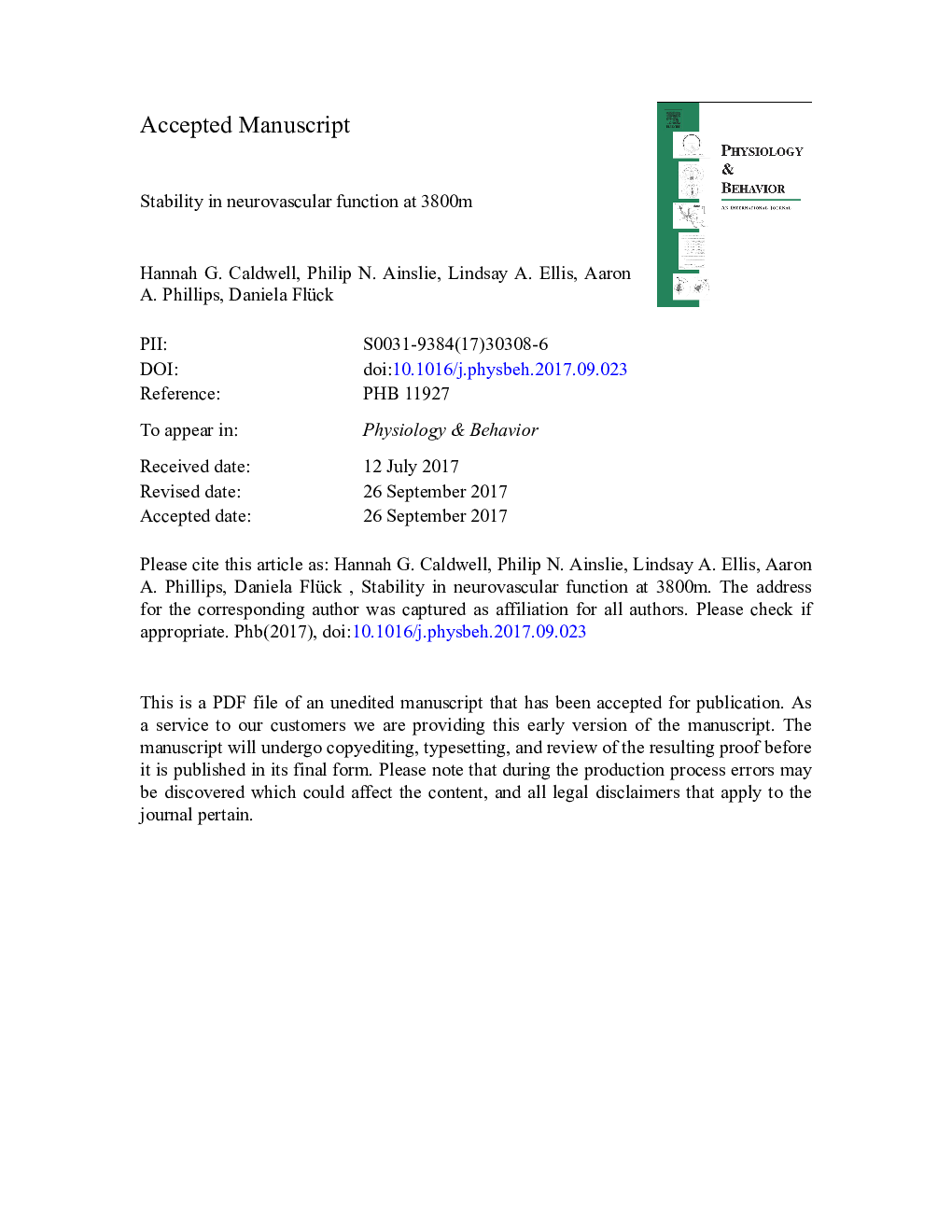| کد مقاله | کد نشریه | سال انتشار | مقاله انگلیسی | نسخه تمام متن |
|---|---|---|---|---|
| 5593554 | 1571137 | 2017 | 29 صفحه PDF | دانلود رایگان |
عنوان انگلیسی مقاله ISI
Stability in neurovascular function at 3800Â m
دانلود مقاله + سفارش ترجمه
دانلود مقاله ISI انگلیسی
رایگان برای ایرانیان
کلمات کلیدی
موضوعات مرتبط
علوم زیستی و بیوفناوری
بیوشیمی، ژنتیک و زیست شناسی مولکولی
فیزیولوژی
پیش نمایش صفحه اول مقاله

چکیده انگلیسی
Hypoxia-induced neurocognitive impairments have been of clinical interest for centuries. The mechanisms responsible for these neurocognitive impairments at altitude are unclear, but may relate to the uncoupling of local neural activity with appropriate changes in cerebral blood flow (CBF; i.e., functional hyperemia). At both sea level and following 3 and 7 days at 3800 m (Barcroft Research Lab, White Mountain, CA, USA), transcranial Doppler was used to index CBF during three separate tasks designed to evoke cerebral functional hyperemia in 11 healthy individuals (26.6 ± 5.5 yrs, 2 females). The tasks were: 1) Visual stimulation (VS), with measurement of anterior and posterior CBF; 2) Verbal fluency (VF), with measurement of bilateral CBF; and 3) Visuospatial task (VST), with measurement of bilateral CBF. The VS evoked an increase from baseline to percent peak response in both the posterior (15.2 ± 7.7%, P < 0.01) and anterior (7.6 ± 3.5%, P < 0.01) cerebral hemispheres; however, the percent peak response was higher in the posterior brain, where visual regions are localized (P = 0.01). The left-sided task, VF, resulted in an increase in both the left (12.2 ± 4.0%, P < 0.01) and right (9.0 ± 4.4%, P < 0.01) cerebral hemispheres; however, the percent peak response was higher in the left brain, where language centers are located (P < 0.01). The right-sided task, VST, evoked an increase in both the left (13.9 ± 7.1%, P < 0.01) and right (16.8 ± 6.7%, P < 0.01) cerebral hemispheres; however, the percent peak response was higher in the right brain, where visuospatial regions are located (P < 0.01). Each cerebral functional hyperemia response for all three tasks was unaffected by high altitude exposure (P > 0.05). Overall, at least at 3800 m, neurovascular function is intact with exposure to 3 and 7 days of high altitude and likely does not explain the previous reports of neurocognitive impairment.
ناشر
Database: Elsevier - ScienceDirect (ساینس دایرکت)
Journal: Physiology & Behavior - Volume 182, 1 December 2017, Pages 62-68
Journal: Physiology & Behavior - Volume 182, 1 December 2017, Pages 62-68
نویسندگان
Hannah G. Caldwell, Philip N. Ainslie, Lindsay A. Ellis, Aaron A. Phillips, Daniela Flück,